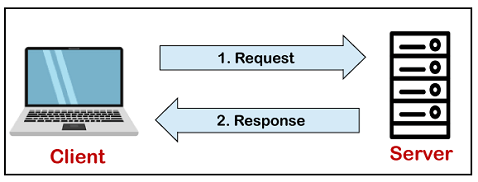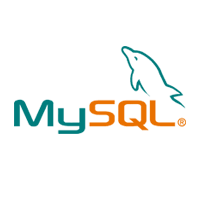MySQL tutorial provides basic and advanced concepts of MySQL. Our MySQL tutorial is designed for beginners and professionals.
MySQL is a relational database management system based on the Structured Query Language, which is the popular language for accessing and managing the records in the database. MySQL is open-source and free software under the GNU license. It is supported by Oracle Company.
Our MySQL tutorial includes all topics of MySQL database that provides for how to manage database and to manipulate data with the help of various SQL queries. These queries are: insert records, update records, delete records, select records, create tables, drop tables, etc. There are also given MySQL interview questions to help you better understand the MySQL database.
What is Database?
It is very important to understand the database before learning MySQL. A database is an application that stores the organized collection of records. It can be accessed and manage by the user very easily. It allows us to organize data into tables, rows, columns, and indexes to find the relevant information very quickly. Each database contains distinct API for performing database operations such as creating, managing, accessing, and searching the data it stores. Today, many databases available like MySQL, Sybase, Oracle, MongoDB, PostgreSQL, SQL Server, etc. In this section, we are going to focus on MySQL mainly.
What is MySQL?
MySQL is currently the most popular database management system software used for managing the relational database. It is open-source database software, which is supported by Oracle Company. It is fast, scalable, and easy to use database management system in comparison with Microsoft SQL Server and Oracle Database. It is commonly used in conjunction with PHP scripts for creating powerful and dynamic server-side or web-based enterprise applications.
It is developed, marketed, and supported by MySQL AB, a Swedish company, and written in C programming language and C++ programming language. The official pronunciation of MySQL is not the My Sequel; it is My Ess Que Ell. However, you can pronounce it in your way. Many small and big companies use MySQL. MySQL supports many Operating Systems like Windows, Linux, MacOS, etc. with C, C++, and Java languages.
MySQL is a Relational Database Management System (RDBMS) software that provides many things, which are as follows:
- It allows us to implement database operations on tables, rows, columns, and indexes.
- It defines the database relationship in the form of tables (collection of rows and columns), also known as relations.
- It provides the Referential Integrity between rows or columns of various tables.
- It allows us to updates the table indexes automatically.
- It uses many SQL queries and combines useful information from multiple tables for the end-users.
How MySQL Works?
MySQL follows the working of Client-Server Architecture. This model is designed for the end-users called clients to access the resources from a central computer known as a server using network services. Here, the clients make requests through a graphical user interface (GUI), and the server will give the desired output as soon as the instructions are matched. The process of MySQL environment is the same as the client-server model.

The core of the MySQL database is the MySQL Server. This server is available as a separate program and responsible for handling all the database instructions, statements, or commands. The working of MySQL database with MySQL Server are as follows:
- MySQL creates a database that allows you to build many tables to store and manipulate data and defining the relationship between each table.
- Clients make requests through the GUI screen or command prompt by using specific SQL expressions on MySQL.
- Finally, the server application will respond with the requested expressions and produce the desired result on the client-side.
A client can use any MySQL GUI. But, it is making sure that your GUI should be lighter and user-friendly to make your data management activities faster and easier. Some of the most widely used MySQL GUIs are MySQL Workbench, SequelPro, DBVisualizer, and the Navicat DB Admin Tool. Some GUIs are commercial, while some are free with limited functionality, and some are only compatible with MacOS. Thus, you can choose the GUI according to your needs.
Reasons for popularity
MySQL is becoming so popular because of these following reasons:
- MySQL is an open-source database, so you don’t have to pay a single penny to use it.
- MySQL is a very powerful program that can handle a large set of functionality of the most expensive and powerful database packages.
- MySQL is customizable because it is an open-source database, and the open-source GPL license facilitates programmers to modify the SQL software according to their own specific environment.
- MySQL is quicker than other databases, so it can work well even with the large data set.
- MySQL supports many operating systems with many languages like PHP, PERL, C, C++, JAVA, etc.
- MySQL uses a standard form of the well-known SQL data language.
- MySQL is very friendly with PHP, the most popular language for web development.
- MySQL supports large databases, up to 50 million rows or more in a table. The default file size limit for a table is 4GB, but you can increase this (if your operating system can handle it) to a theoretical limit of 8 million terabytes (TB).
History of MySQL
The project of MySQL was started in 1979 when MySQL’s inventor Michael Widenius developed an in-house database tool called UNIREG for managing databases. After that, UNIREG has been rewritten in several different languages and extended to handle big databases. After some time, Michael Widenius contacted David Hughes, the author of mSQL, to see if Hughes would be interested in connecting mSQL to UNIREG’s B+ ISAM handler to provide indexing to mSQL. That’s the way MySQL came into existence.
MySQL is named after the daughter of co-founder Michael Widenius whose name is “My”.
History by Year:
| Year | Happenings |
|---|---|
| 1995 | MySQL AB, founded by Michael Widenius (Monty), David Axmark, and Allan Larsson in Sweden. |
| 2000 | MySQL goes open-source and releases software under the terms of the GPL. Revenues dropped 80% as a result, and it took a year to make up for it. |
| 2001 | Marten Mickos elected CEO at age 38. Marten was the CEO of several nordic companies before joining MySQL and comes with a sales and marketing background. 2 million active installations. Raised series with an undisclosed amount from Scandinavian venture capitalists. It was estimated to be around $1 to $2 million. |
| 2002 | MySQL launched its headquarters in addition to Swedish headquarters. At that time, 3 million active users. MySQL was ended this year with $6.5 million in revenue with 1,000 paying customers. |
| 2003 | This year raised a $19.5 million series b from benchmark capital and index ventures. At this time, 4 million active installations and over 30,000 downloads per day. It ended the year with $12 million in revenue. |
| 2004 | With the main revenue coming from the OEM dual-licensing model, MySQL decides to move more into the enterprise market and to focus more on recurring revenue from end-users rather than one-time licensing fees from their OEM partners. It ended the year with $20 million in revenue. |
| 2005 | MySQL launched the MySQL network model after the Redhat network. The MySQL network is a subscription service targeted at end-users that provide updates, alerts, notifications, and product-level support designed to make it easier for companies to manage hundreds of MySQL servers. MySQL 5 ships and includes many new features to go after enterprise users (e.g., stored procedures, triggers, views, cursors, distributed transactions, federated storage engines, etc.) Oracle buys innobase, the 4-person, and a Finland’s company behind MySQL’s InnoDB storage backend, ended the year with $34 million in revenue based on 3400 customers. |
| 2006 | Marten Mickos confirms that Oracle tried to buy MySQL. Oracle’ CEO Larry Ellison commented: “we’ve spoken to them, in fact, we’ve spoken to almost everyone. Are we interested? It’s a tiny company. I think the revenues from MySQL are between $30 million and $40 million. Oracle’s revenue next year is $15 billion.” Oracle buys sleepycat, the company that provides MySQL with the Berkeley db transactional storage engine. Marten Mickos announces that they are making MySQL ready for an IPO in 2008 on a projected $100 million in revenues. 8 million active installations. MySQL has 320 employees in 25 countries, 70 percent of whom work from home, raised an $18 million series c based on a rumored valuation north of $300 million. MySQL is estimated to have a 33% market share measured in install base and 0.2% market share measured in revenue (the database market was a $15 billion market in 2006). It ended the year with $50 million in revenue. |
| 2007 | It ended the year with $75 million in revenue. |
| 2008 | Sun Microsystems acquired MySQL AB for approximately $1 billion. Michael Widenius (Monty) and David Axmark, two of MySQL AB’s co-founders, begin to criticize Sun publicly and leave Sun shortly after. |
| 2009 | Marten Mickos leaves Sun and becomes entrepreneur-in-residence at Benchmark Capital. Sun has now lost the business and spiritual leaders that turned MySQL into a success. Sun Microsystems and Oracle announced that they have entered into a definitive agreement under which Oracle will acquire Sun common stock for $9.50 per share in cash. The transaction is valued at approximately $7.4 billion. |




